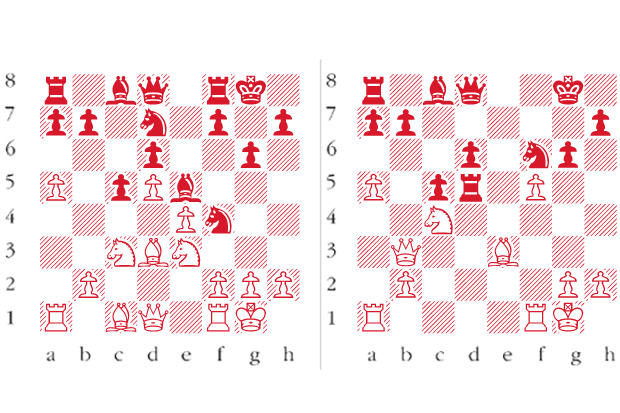The ever reliable Steve Giddins has just published a new book on that great strategist Aron Nimzowitsch. This is the third tome on Nimzo in the last few years, and in many ways it is the best. Giddins has overturned conventional thinking about Nimzowitsch’s celebrated games in the light of the latest computer analysis and investigations. In some cases the differences are quite astonishing, as in the following game from an elite event which earned Nimzowitsch a brilliancy prize. Notes based on those from Nimzowitsch: Move by Move (Everyman Chess).
Nimzowitsch-Marshall: New York 1927; Modern Benoni
1 c4 Nf6 2 d4 e6 3 Nf3 c5 4 d5 d6 5 Nc3 exd5 6 cxd5 g6 7 Nd2 Nbd7 8 Nc4 Nb6 9 e4 Bg7 10 Ne3 0-0 11 Bd3 Nh5 12 0-0 Be5 13 a4 Nf4 14 a5 Nd7 (see diagram 1) 15 Nc4 This position shows where the computer really can change assessments. The variation 15 Bc2 Qh4 16 g3 Qh3 17 gxf4 Bxf4 18 Ng4 Ne5! was previously assessed as ‘with complications not unfavourable to Black’. However, 40 years later and silicon-armoured, we can say that this is not the case: after the further moves 19 Nf6+ Kg7 20 Bxf4 Black is quite lost. 15 … Nxd3 16 Qxd3 f5 After 16 … Bd4 17 Bf4 Ne5 18 Bxe5 dxe5 19 Nb5 White has a slight advantage but the silicon beast points out something inconvenient for Black: instead of 17 Bf4, White has the much stronger 17 Bh6!, with the nasty point that after 17 … Re8 White really can take on d6: 18 Nxd6! Ne5 19 Qb5 and the knight is indirectly protected, thanks to the attack on the rook on e8!. 17 exf5 Rxf5 18 f4 18 Ne4 would, indeed, have retained the advantage, whereas after the text, things could have changed markedly.






Comments
Join the debate for just £1 a month
Be part of the conversation with other Spectator readers by getting your first three months for £3.
UNLOCK ACCESS Just £1 a monthAlready a subscriber? Log in